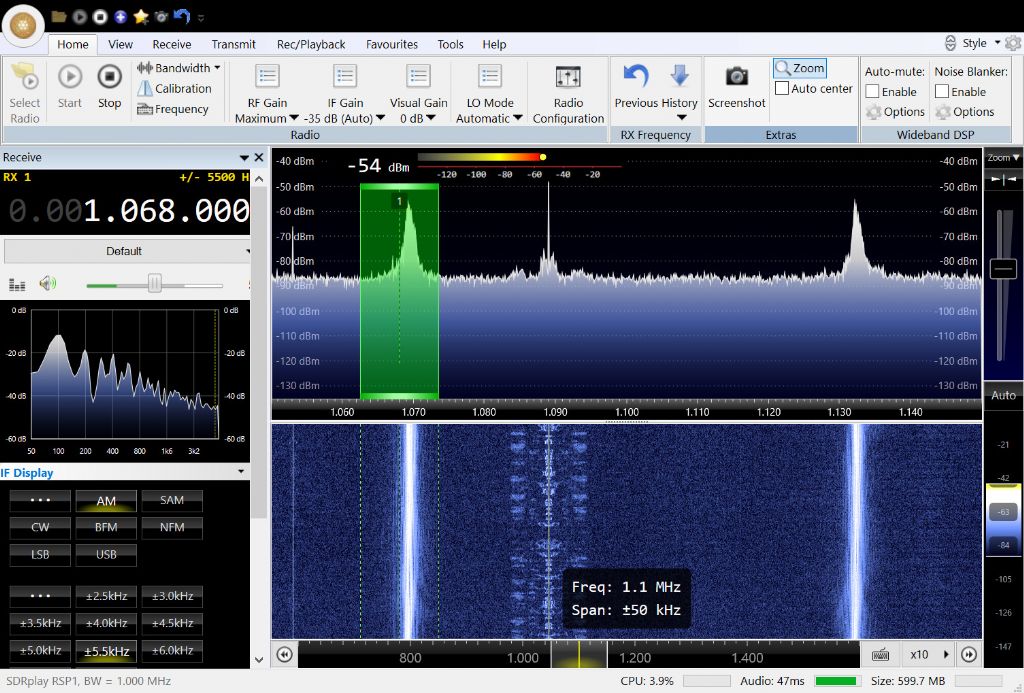Posted by Peter Spink on 09/07/2018 22:53:50:
So without expensive test gear and no obvious effects e.g. DAB radio being even more useless than normal, how do you know if your VFD is putting shash back down the mains?
I have four VFDs in the workshop and have no obvious problems.
You can get an SDR dongle relatively cheaply <£200 and set them up fairly easily. Not really plug-and-play so unless you're interested in Radio (fascinating), the effort is probably too much for a play.
Here's what you can expect to find if you do have a go:

The display shows part of the Medium Waveband. The top right graph plots signal strength, the lower graph plots frequency distribution. Both graphs show three strong signals. The lower graph shows the feathered central signal is modulated. It's a radio station playing pop music. The other two strong signals are emitted by my VFD. The drive is unloaded, that is the VFD is ready to deliver power but the motor is disconnected. By chance the interfering spurs straddle the legitimate broadcaster so all appears well on my workshop radio. It is pure luck that the broadcast is unscathed and there's a decent chance something else will get walloped – my unfiltered VFD radiates strong signals all the way from 10kHz up to about 200MHz. (Long Wave to DAB Radio, not TV)
Things get far more exciting when the motor is switched on. Now real power is flowing and interference is much, muc worse:

In this condition, the radio station is completely obliterated. In fact the whole Medium Wave is covered by a series of strong radio signals generated by my VFD as a by-product of making 3-phase.
The good news is that most of this poo is short-range. Unfortunately, some of it will travel long distances along mains wiring, or be radiated efficiently whenever cabling happens to resonate. Tracing the source of intermittent mains-carried interference is so difficult that you're unlikely to be hunted down unless you zap an important service like Air Traffic Control. Irritated neighbours are unlikely to connect their odd internet problems with what goes on in your shed and instead abuse call-centre operatives in Manilla.
Pacemaker owners are advised to avoid getting close to strong radio sources like transmitters and arc welding equipment. An unprotected VFD is quite potent too …
Completely eliminating the problem is difficult, but it’s worth reducing it by implementing as much best practice as you can:
-
Cable between VFD and Motor should be as short as possible. It should be a shielded type, ideally double shielded.
-
Cable should be run inside an earthed metal conduit,
-
Mains input should be filtered, preferably with a filter matched with the VFD. Follow the advice given for an industrial installation rather than taking pot-luck.
Dave
 Neil Wyatt.
Neil Wyatt.





